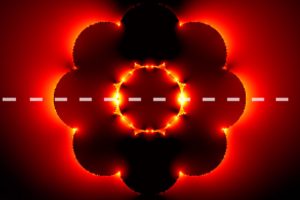
Jewelers consider color, clarity, cut, and carats when evaluating a diamond’s worth. But in the quantum world, another quality is more valuable: the presence of nitrogen-vacancy (NV) centers. These light-emitting defects in the jewels’ lattice are potent sources of particles that have the potential to be used in sensing applications ranging from biological imaging to electric and magnetic field sensing and more.
A study led by Johns Hopkins engineers pairs that power with DNA’s remarkable self-assembling abilities to create high-performance hybrid plasmonic nanodiamonds: infinitesimal diamond-like particles that can control light in unique ways. The team’s results appeared in Nano Letters.
“These particles combine the strength of diamonds with plasmonic materials—which are substances that can interact with and manipulate light in specific ways–and DNA, which we used as a scaffold to attach the two together,” said team leader Ishan Barman, associate professor of mechanical engineering.
Up until now, it has been challenging to attach NV centers with structures that intensify their optical properties. The Barman team’s use of DNA was the innovation that resulted in the components arranging themselves into a closed nanocavity that surrounded the nanodiamond, which had a profound impact on the nanodiamond’s brightness and emission rates. The team calls the structure “resonance indicator of nanodiamonds and gold” (RING).
What’s more, the researchers’ DNA assembly method is also “tunable,” allowing them to vary the size of the nanodiamond components for the desired optical power and effects.
“Our simulations showed that this closed cavity enhanced the nanodiamond’s brightness and emission rate more uniformly than NVs that were partially open,” said team member Yun Chen, assistant professor of mechanical engineering. “Experiments showed that our structure increased the emission rate up to 18 times and the brightness by 50.”
The team believes that this work may set the stage for nanodiamonds to be used as dependable solid-state single-photon sources, potentially revolutionizing imaging techniques, particularly to investigate and understand the complex quantum phenomena that happen in biological systems: unusual and sometimes counterintuitive behaviors that occur at the quantum level of physics.